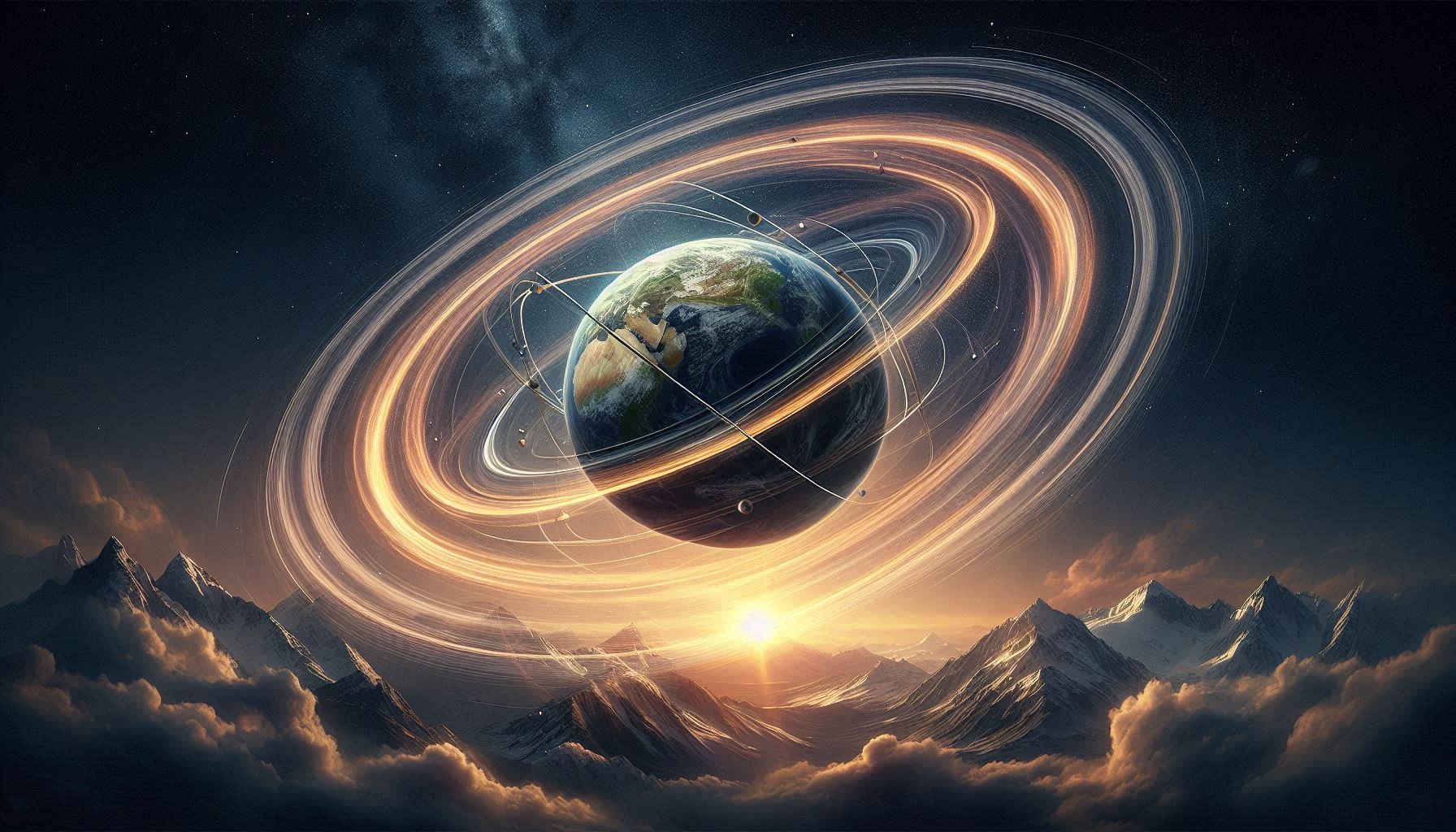While researching the rotation, we came across the idea that the axis of rotation rotates. The axis of rotation has an inclination of about 23.4 degrees relative to the orbital plane, and that inclination moves in a circle, completing one revolution in a period of about 26,000 years. This is called precession. The axis of rotation rotates like a top wobbles just before it stops. Since we cannot experience rotation, there is no way we can sense precession, but the Earth moves more than we thought.
The North Star is at the end of the rotation axis, and among the stars that move across the sky as the Earth rotates, the one that does not move is called the North Star. It seems that this North Star also changes due to precession. Currently, it is Polaris in Ursa Minor, around 2000 BC it was Thuban in Draco, and around 12000 BC it was Vega in Lyra, and around 12000 BC Arcturus in Boötes is a high-velocity star that moves a lot, and it was the North Star around 58000 BC.
https://mathematica.site/web-mag/astronomy1/a1-11/
In addition, precession is also known as the movement of the vernal equinox. The constellation where the sun is located at the moment of the vernal equinox is currently Pisces, and this constellation is apparently changing. This change takes about 72 years to move one degree, so it takes about 2150 years to move one constellation. One revolution is 12 constellations, which is about 26,000 years as mentioned above.
https://www.ncsm.city.nagoya.jp/study/science_qa/post_54.html
In addition to the rotational motion of the axis, the tilt of the axis itself seems to be changing as well. This is called the tilt angle, and it seems to vary between 21 and 24.5 degrees in a cycle of about 40,000 years, and is currently at 23.4 degrees. The Earth’s orbit also seems to be changing, fluctuating from an ellipse to an almost perfect circle and back again in a cycle of 100,000 years. If it changes so much, the Earth’s climate must be completely different depending on the era.
These periodic changes are called Milankovitch cycles. There seems to have been a paradox in which the warmest periods were observed despite the weakest solar radiation, but this is gradually being explained by ocean currents and wind movements.
https://www.aori.u-tokyo.ac.jp/research/topics/2024/20240715.html
In addition, the axis of rotation seems to be subject to a slight wobble called nutation, which occurs approximately every 19 years due to the gravitational forces of the Sun and Moon. Also, because the Earth is a slightly distorted sphere, this causes a wobble called free nutation.
https://diamond.jp/articles/-/306106
I looked into it from the perspective of precession, and it seems that the Earth wobbles quite a bit, including slight movements. I had imagined it revolving around a fixed axis in a gravity-free, resistance-free space, but it actually moves in a complex way that combines many cycles. The celestial motion of the Earth is amazing.


